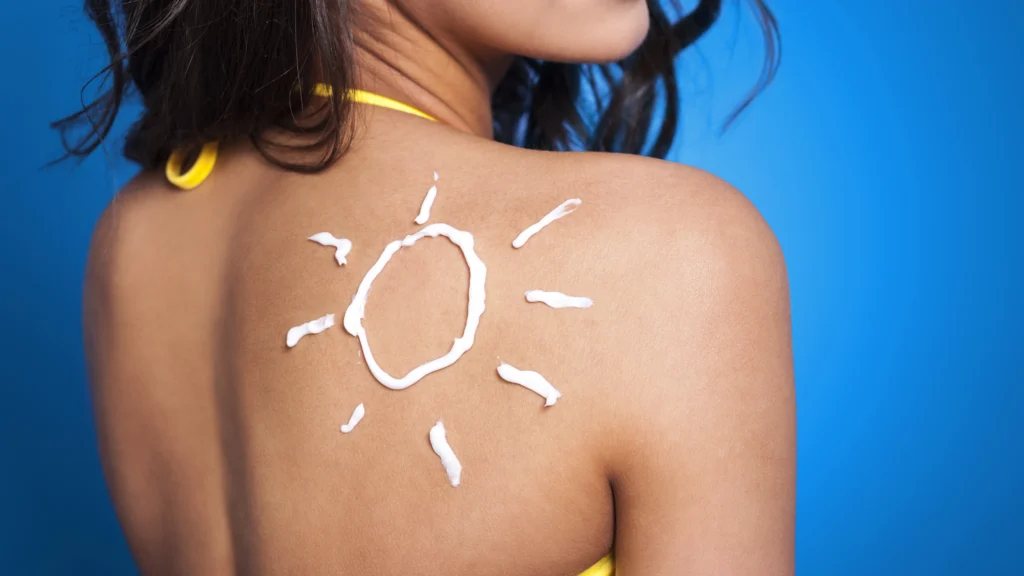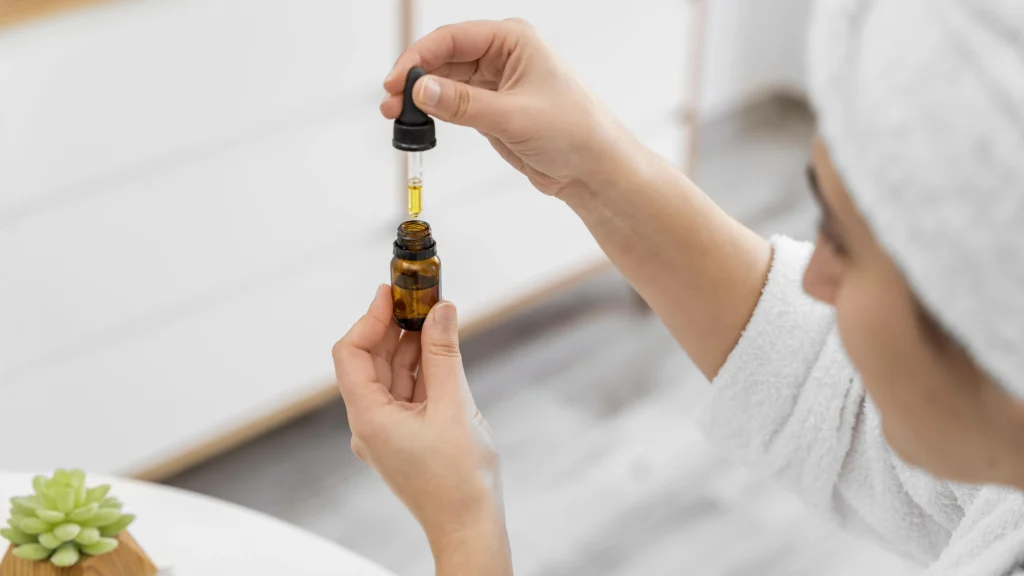Confused about the correct steps for a skincare routine that actually works? You’re not alone. With countless products flooding the market, determining the right order for application can feel overwhelming. The good news: following the proper steps for a skincare routine isn’t just marketing hype—it’s backed by dermatological science and can dramatically transform your skin’s health and appearance.
This comprehensive, expert-reviewed guide cuts through the confusion to deliver a clear, science-based approach to your daily steps for a skincare routine. We’ll break down both morning and evening regimens, explain why order matters, and help you customize these essential steps for your specific skin concerns.
Why Does Skincare Order Matter? The Simple Science
Before diving into the specific steps for a skincare routine, it’s important to understand why order matters in the first place.
The effectiveness of your products largely depends on when and how you apply them:
- The thin-to-thick: rule states that products should be applied in the order of their thinness to thickness.
- pH levels: Your skin maintains a slightly acidic pH (4.5-5.5), and certain active ingredients work best in specific pH environments
- Penetration factors: Active ingredients need direct skin contact to work effectively
- Layering logic: Proper sequencing prevents the frustrating “pilling” effect when products roll up into tiny balls
Following the correct order ensures each product can penetrate properly and deliver maximum benefits—skipping this fundamental principle can render even expensive products ineffective.
The Core Skincare Routine Steps (Foundation for Healthy Skin)
While 10-step routines might trend on social media, dermatologists agree that everyone needs just three fundamental steps for a skincare routine:
- Cleanse: Removing dirt, oil, makeup, and environmental pollutants
- Moisturize: Hydrating the skin and reinforcing its natural barrier
- Protect (AM ONLY): Applying sunscreen with SPF 30+ every morning
PRO TIP: If you’re just starting out, master these three core steps consistently before adding additional products. Even this simplified routine will yield noticeable improvements!
These essential steps for a skincare routine form the foundation upon which you can build a more personalized regimen as your skin needs evolve.
Your Step-by-Step Morning (AM) Skincare Routine
Your morning routine prepares your skin to face environmental stressors throughout the day. Here’s the optimal order:
Step 1: Cleanse
Use a mild cleanser that is suitable for your skin type to begin. This eliminates residue from items applied the previous evening as well as nighttime oil accumulation.
What to look for based on skin type:
- Oily skin: Gel or foaming cleansers
- Dry skin: Cream or lotion cleansers
- Sensitive skin: Fragrance-free, minimal-ingredient formulas
Step 2 (Optional): Tone
The pH of your skin is balanced by modern toners, which also prepare it to absorb cosmetics more effectively.Unlike harsh astringents of the past, today’s formulas often contain hydrating ingredients.
WARNING: If you use a pH-balanced cleanser (as most quality cleansers now are), this step is truly optional for many people.
Step 3 (Optional): Serum
Morning is the ideal time for antioxidant serums, particularly Vitamin C, which:
- Neutralize free radicals from UV exposure and pollution
- Brighten skin tone and reduce hyperpigmentation
- Provide additional photoprotection when paired with sunscreen
Using your fingertips, apply three to four drops, then gently massage into the skin until completely absorbed.
Step 4 (Optional): Eye Cream
Compared to the rest of your face, the skin surrounding your eyes is 40% thinner. A specialized eye cream addresses specific concerns like:
- Dark circles
- Puffiness
- Fine lines
Apply a small amount using your ring finger (which naturally applies the least pressure) and gently tap—never rub—around the orbital bone.
Step 5: Moisturize
Even oily skin needs hydration. Your morning moisturizer should be lighter than your night cream:
- Gel or lotion: Oily/combination skin
- Lotion or light cream: Normal skin
- Rich cream: Dry skin
This crucial step locks in hydration and strengthens your skin barrier.
Step 6: Sunscreen (SPF 30+)
This is the most important step in your morning skincare routine. Apply a broad-spectrum sunscreen with at least SPF 30 as the final step before makeup.

EXPERT ADVICE: Use approximately ¼ teaspoon (about the size of a nickel) for your entire face. Most people apply less than half the recommended amount!
For maximum protection, wait 15 minutes before sun exposure if using chemical sunscreens.
Your Step-by-Step Evening (PM) Skincare Routine
Your evening routine focuses on repair and regeneration while you sleep. Here are the correct steps for a skincare routine at night:
Step 1: Double Cleanse (Recommended if wearing makeup/SPF)
1a. Oil-Based Cleanser/Balm
Oil attracts oil! These cleansers effectively break down:
- Makeup
- Sunscreen
- Excess sebum
- Environmental pollutants
After 30 to 60 seconds of massaging dry skin, emulsify with water and rinse.
1b. Water-Based Cleanser
To get rid of any leftover residue, use your usual face cleanser afterward.
QUICK TIP: If you don’t wear makeup or heavy sunscreen, a single thorough cleanse with your regular cleanser may be sufficient.
Step 2 (Optional): Tone
Evening toners might contain gentle exfoliating ingredients like glycolic or lactic acid to promote overnight cell turnover.
Step 3 (Optional but Recommended): Treatment Serum/Retinoid
Your strongest active components work best at night:
- Retinoids: The most effective anti-aging treatment for acne, texture, and fine lines
- Exfoliating acids: BHAs (salicylic acid) or AHAs (glycolic acid) for pore clearance and cell turnover
- Targeted serums: For particular issues including as dehydration or hyperpigmentation
WARNING: Avoid mixing too many active ingredients in one night as this may cause discomfort. Think about using various components on different evenings.
Step 4 (Optional): Eye Cream
As in your morning routine, apply eye cream by gently tapping around the orbital bone. Nighttime formulas are often richer than daytime versions.
Step 5: Moisturize (or Night Cream)
Evening moisturizers are typically richer than daytime formulas, supporting your skin’s natural repair processes. Look for ingredients like:
- Ceramides
- Peptides
- Niacinamide
- Hyaluronic acid
Step 6 (Optional): Face Oil

If your skin needs extra nourishment, facial oils can be the final step in your PM routine. They seal in all previous products and provide intense moisture.
Apply 3-5 drops, warm between your palms, and press gently into the skin rather than rubbing.
Where Do Exfoliants and Masks Fit In Your Skincare Routine Steps?
These special treatments don’t belong in your daily steps for a skincare routine, but they play important roles:
Exfoliants (Chemical or Physical)
Use 1-3 times per week after cleansing and before applying serums:
- Chemical exfoliants: AHAs, BHAs, or enzyme formulas that dissolve bonds between dead skin cells
- Physical exfoliants: Scrubs or tools that manually remove dead skin cells
DANGER ZONE: The most common mistake is over-exfoliation, which can damage your skin barrier. Start once weekly and increase gradually as your skin adjusts.
Masks
Apply after cleansing and before the rest of your routine, typically 1-3 times weekly:
- Clay/charcoal masks: Absorb excess oil and clear pores
- Hydrating masks: Provide intense moisture
- Treatment masks: Target specific concerns like brightening or calming inflammation
Always follow the specific instructions on your mask product, as application times vary significantly.
Dermatologist Tips for Successful Skincare Routine Steps
“The number one mistake I see patients make with their skincare routine is using too many active ingredients at once. This doesn’t accelerate results—it compromises your skin barrier, leading to irritation, sensitivity, and sometimes even breakouts. Choose one or two targeted actives and be patient.” —Dr. Rebecca Chen, Board-Certified Dermatologist
“Consistency trumps complexity every time. I’d rather see a patient diligently following a simple three-step routine than sporadically using an elaborate ten-step regimen. Your skin responds best to steady, gentle care rather than occasional intensive treatments.” —Dr. Marcus Williams, Board-Certified Dermatologist
Quick Guide: Adapting Steps for Your Skin Type
While the core steps for a skincare routine remain consistent, the specific products you choose should vary based on your skin type:
Oily/Acne-Prone Skin
- Cleansers: Gel or foaming formulas with salicylic acid
- Moisturizers: Oil-free, non-comedogenic gel textures
- Treatments: BHA (salicylic acid) serums or benzoyl peroxide spot treatments
- Sunscreen: Lightweight, oil-free or “matte” formulations
Dry Skin
- Cleansers: Cream or lotion cleansers that preserve natural oils
- Moisturizers: Richer creams with ceramides and hyaluronic acid
- Treatments: Hydrating serums with multiple molecular weights of hyaluronic acid
- Extra: Consider adding facial oils in your PM routine
Sensitive Skin
- All products: Fragrance-free formulations with minimal ingredients
- Cleansers: Gentle, non-foaming formulas
- Actives: Introduce very gradually, patch test everything
- Focus: Products that support and repair the skin barrier
Frequently Asked Questions About Skincare Routine Steps
Do I need all these steps in my skincare routine?
No. The core three steps (cleanse, moisturize, protect) are essential, but additional steps should be added gradually based on your specific skin concerns. Start simple and expand your routine as needed.
How long should I wait between steps?
Generally, wait until each product feels mostly absorbed before applying the next—usually 30-60 seconds is sufficient. Exception: Some active ingredients like retinoids benefit from application to completely dry skin, so waiting 15-20 minutes after cleansing may be recommended.
Can I use Vitamin C and Retinol together?
While technically possible, it’s best to use Vitamin C in your morning routine and retinol/retinoids in your evening routine. This minimizes potential irritation and prevents the ingredients from destabilizing each other.
What is the single most important step in a skincare routine?
For morning: Sunscreen, without question. For evening: Thorough cleansing. If you only do these two things consistently, you’re already giving your skin significant protection.
Does toner really do anything?
Today’s toners have evolved significantly from the harsh, alcohol-based formulas of the past. Modern toners can provide hydration, gentle exfoliation, or targeted treatment depending on their formulation. They’re not essential for everyone but can be beneficial depending on your skin concerns.
Concluding Summary: The Effortless Way to Perfect Skin
Building an effective skincare routine isn’t about using the most products or following the latest trends—it’s about understanding the correct steps for a skincare routine that works for your unique skin.
Remember these key principles:
- Always cleanse before applying other products
- Apply products from thinnest to thickest consistency
- Never skip sunscreen in the morning
- Be patient—most products need 4-6 weeks to show significant results
- Listen to your skin and adjust accordingly
The perfect steps for a skincare routine are ones that you’ll actually follow consistently. Start with the core steps, add targeted treatments as needed, and give your skin time to respond. Your future self will thank you for the care you’re giving your skin today.
